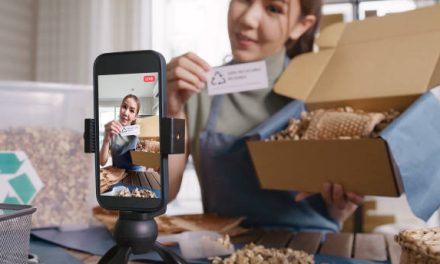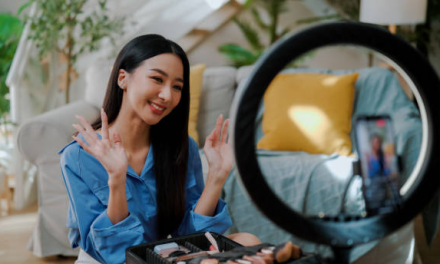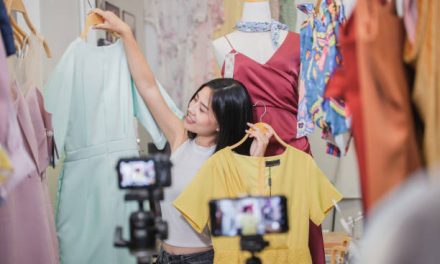As fashion adapts to a digital-first world, fashion marketing trends evolve to reflect shifts in technology, consumer behavior, and the increasing demand for sustainable practices. In 2025, fashion marketing will go beyond traditional advertising, focusing instead on creating meaningful, engaging, and tech-driven experiences for consumers.
Brands that anticipate and respond to these trends will position themselves as industry leaders in a highly competitive space.
What is Fashion Marketing?
Fashion marketing encompasses the strategies, tools, and practices that fashion brands use to promote their products, engage with consumers, and build brand identity. It combines market research, digital content, branding, and consumer psychology to create campaigns that attract and retain customers. Today’s fashion marketing isn’t just about promoting a product; it’s about crafting a story that resonates with a specific audience. Effective fashion marketing requires brands to understand the behaviors and preferences of their consumers, leveraging data and digital tools to meet them where they are—whether online, in-store, or across social platforms.
In 2025, fashion marketing will rely more than ever on technological innovation and data-driven insights, allowing brands to predict trends, personalize consumer experiences, and drive engagement across multiple channels.
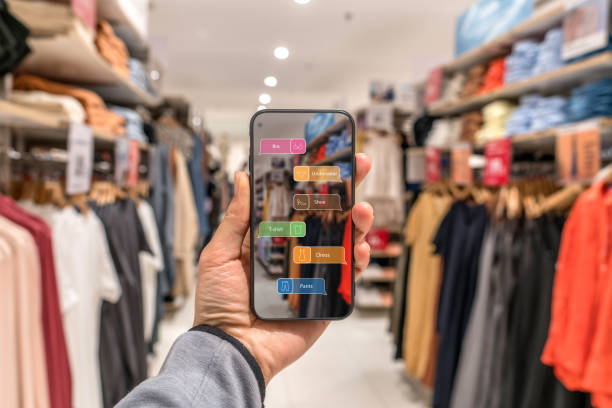
15 Fashion Marketing Trends to Look Out for in 2025
2025 will introduce new trends in fashion marketing that leverage advancements in technology, social consciousness, and consumer demand for more interactive and personalized experiences. Here’s a look at the top 15 trends shaping the future of fashion marketing.
1. Hyper-Personalized Shopping Experiences
Consumers crave personal connections with brands, and in 2025, fashion marketing trends will heavily emphasize hyper-personalization. By collecting and analyzing data on individual shopping behaviors, brands can deliver unique product recommendations and marketing messages tailored to each consumer’s tastes, lifestyle, and preferences. Expect brands to use AI and machine learning to segment audiences more precisely and deliver shopping experiences that feel custom-made for each individual.
2. Augmented Reality (AR) for Virtual Try-Ons
While AR technology is already being used by some brands, 2025 will see significant improvements in virtual try-ons, making them more immersive and realistic. With advanced AR capabilities, consumers will be able to try on clothing, accessories, and even makeup through their phones, seeing exactly how items will look on them before buying. This will help bridge the gap between online and in-store shopping, reducing return rates and making online shopping more engaging and accurate.
3. Social Commerce and Live Shopping Events
Social media platforms have become popular shopping hubs, and by 2025, fashion marketing trends will capitalize on social commerce and live-streamed shopping events. Brands will increasingly use platforms like Instagram, TikTok, and YouTube to host live shopping events featuring influencers and celebrities. These live streams allow consumers to view products in real time, ask questions, and make purchases instantly, making the shopping experience more interactive and spontaneous.

4. Sustainable and Ethical Marketing
As climate concerns grow, sustainability is no longer a trend—it’s a core consumer expectation. By 2025, fashion marketing trends will focus heavily on promoting sustainable practices, transparent supply chains, and ethical sourcing. Brands that highlight eco-friendly materials, responsible production processes, and initiatives like recycling or upcycling will resonate with consumers who prioritize environmental responsibility.
5. Artificial Intelligence (AI) in Fashion Marketing
AI technology is revolutionizing the way brands operate, and in 2025, AI will be deeply integrated into fashion marketing strategies. AI can help brands analyze vast amounts of data, anticipate fashion trends, and even automate ad campaigns. By using AI-powered insights, brands can create more accurate and efficient marketing strategies that adapt quickly to consumer preferences and global fashion trends.
6. Circular Fashion Initiatives
Circular fashion, which promotes practices like recycling, upcycling, and reselling, will play a major role in fashion marketing trends in 2025. Circular fashion offers sustainable alternatives that appeal to eco-conscious shoppers, and marketing will emphasize the benefits of reducing waste through these practices. Brands that offer recycling programs, second-hand marketplaces, and upcycled collections will attract consumers who value sustainable fashion choices.
7. Inclusive and Diverse Marketing Campaigns
Diversity and inclusion have become essential components of effective marketing. In 2025, fashion marketing will continue to champion representation across various identities, including body types, ethnicities, and ages. Inclusive marketing fosters a sense of belonging and authenticity, appealing to consumers who want to see themselves represented. Brands will expand their messaging to showcase diversity and make products more accessible and relatable to a broader audience.

8. Voice Search Optimization
Voice search is on the rise, and in 2025, optimizing content for voice search will be a priority. As more consumers use smart speakers and voice-activated assistants like Siri, Alexa, and Google Assistant, brands will need to ensure that their online content is optimized to capture these voice queries. By tailoring product descriptions and website copy to answer natural language queries, brands can enhance visibility and improve their SEO performance.
9. Influencer Marketing Evolves
Influencer marketing will continue to grow in 2025, but with a shift in focus from mega influencers to micro and niche influencers. Smaller influencers tend to have more engaged and loyal followings, allowing brands to build authentic relationships with consumers. Collaborating with these influencers creates a sense of relatability and trust, making their endorsements more persuasive and credible.
10. NFT Fashion and Digital-Only Collections
The rise of digital fashion and NFTs (Non-Fungible Tokens) is opening up new avenues for virtual ownership. In 2025, brands will create digital-only collections and NFT fashion items, allowing consumers to purchase virtual clothing they can wear on social media or in virtual spaces like the metaverse. This trend is not only novel but also environmentally friendly, as it eliminates the physical production and shipping of products, reducing environmental impact.
11. Seamless Omni-Channel Shopping Experiences
In 2025, consumers will expect seamless shopping experiences across all channels—whether in-store, online, or on mobile apps. This omni-channel approach will make it easy for customers to start shopping in one place and pick up where they left off in another. Brands will invest in technology to create consistent, personalized experiences regardless of where the consumer interacts with the brand, fostering greater loyalty and convenience.
12. Sustainable Packaging and Shipping
As consumers become more conscious of the environmental impact of packaging and shipping, brands in 2025 will focus on sustainable practices in these areas. Eco-friendly packaging materials, reduced plastic usage, and carbon-neutral shipping options will become standard, with marketing campaigns emphasizing these efforts. Brands will highlight their commitment to sustainability in every stage of the customer journey, from the product to the packaging.

13. Data Privacy and Transparent Use of Consumer Data
With privacy concerns on the rise, consumers are increasingly cautious about how their data is used. In 2025, brands will prioritize data transparency, openly sharing how they collect, store, and use consumer data. By adopting ethical data practices and giving consumers control over their personal information, brands can build trust and loyalty, enhancing their reputation.
14. AI-Generated Fashion Designs
In a bold new step, fashion brands in 2025 will start using AI to create unique fashion designs. AI can analyze current trends, consumer preferences, and historical data to suggest design concepts, helping brands stay ahead of the curve. This approach will shorten design cycles, allowing brands to respond quickly to changing trends and create fresh, innovative products.
15. Integration of Wearable Tech
The integration of technology into fashion, like smart clothing and accessories, will grow in 2025. With innovations such as fitness-tracking garments, temperature-regulating fabrics, and even smart shoes, wearable tech will be marketed as both functional and stylish. Fashion brands will highlight the added value of wearable tech, appealing to a tech-savvy consumer base looking for products that combine style and practicality.
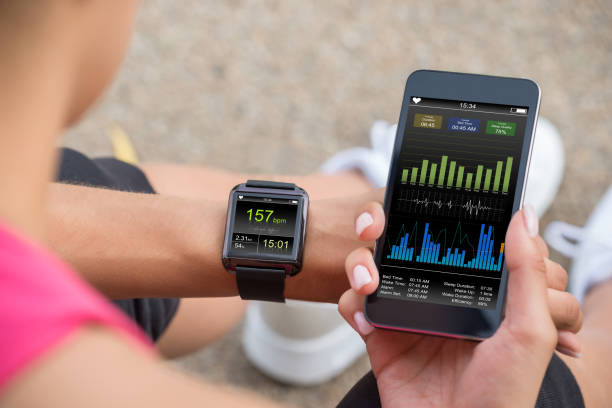
Conclusion
The fashion marketing trends of 2025 represent a blend of technology, sustainability, and personalization. From AI-driven insights to virtual try-ons and eco-friendly practices, fashion marketing is moving towards a more innovative, consumer-centric future. Brands that stay ahead of these trends can establish strong connections with consumers, aligning with values such as inclusivity, sustainability, and technological advancement.
For brands looking to navigate these emerging trends effectively, Marketing Technology offers comprehensive SEO and content marketing services, helping fashion brands reach their audiences through data-driven strategies and engaging content.
Frequently Asked Questions:
What is the market trend right now in fashion?
The current trend in the fashion market emphasizes sustainability, personalization, and digital engagement. Consumers today are seeking brands that align with eco-friendly practices, offer interactive online shopping experiences, and provide products that resonate with their personal style.
What are the 3 market trends?
The three dominant trends are sustainability, digital transformation, and inclusivity. Sustainability focuses on ethical sourcing and eco-friendly practices. Digital transformation includes technologies like AR and AI, while inclusivity emphasizes diverse and authentic representation.
What is the fashion marketing trend in 2024?
Fashion marketing trends 2024 heavily emphasized social commerce, the use of AR for virtual try-ons, and inclusivity in advertising. As brands adopted live-stream shopping events and inclusive campaigns, they set the stage for further advancements in 2025, where technology and consumer values will play an even bigger role.


